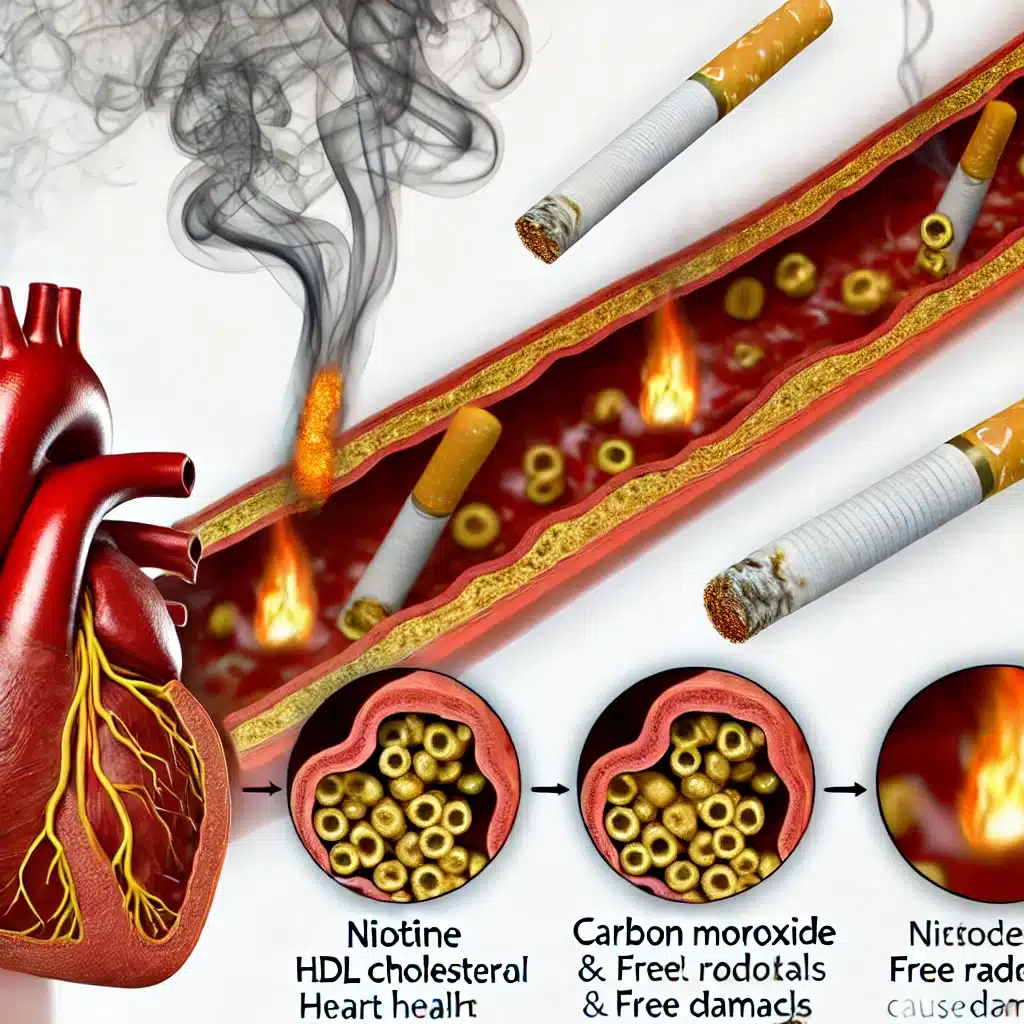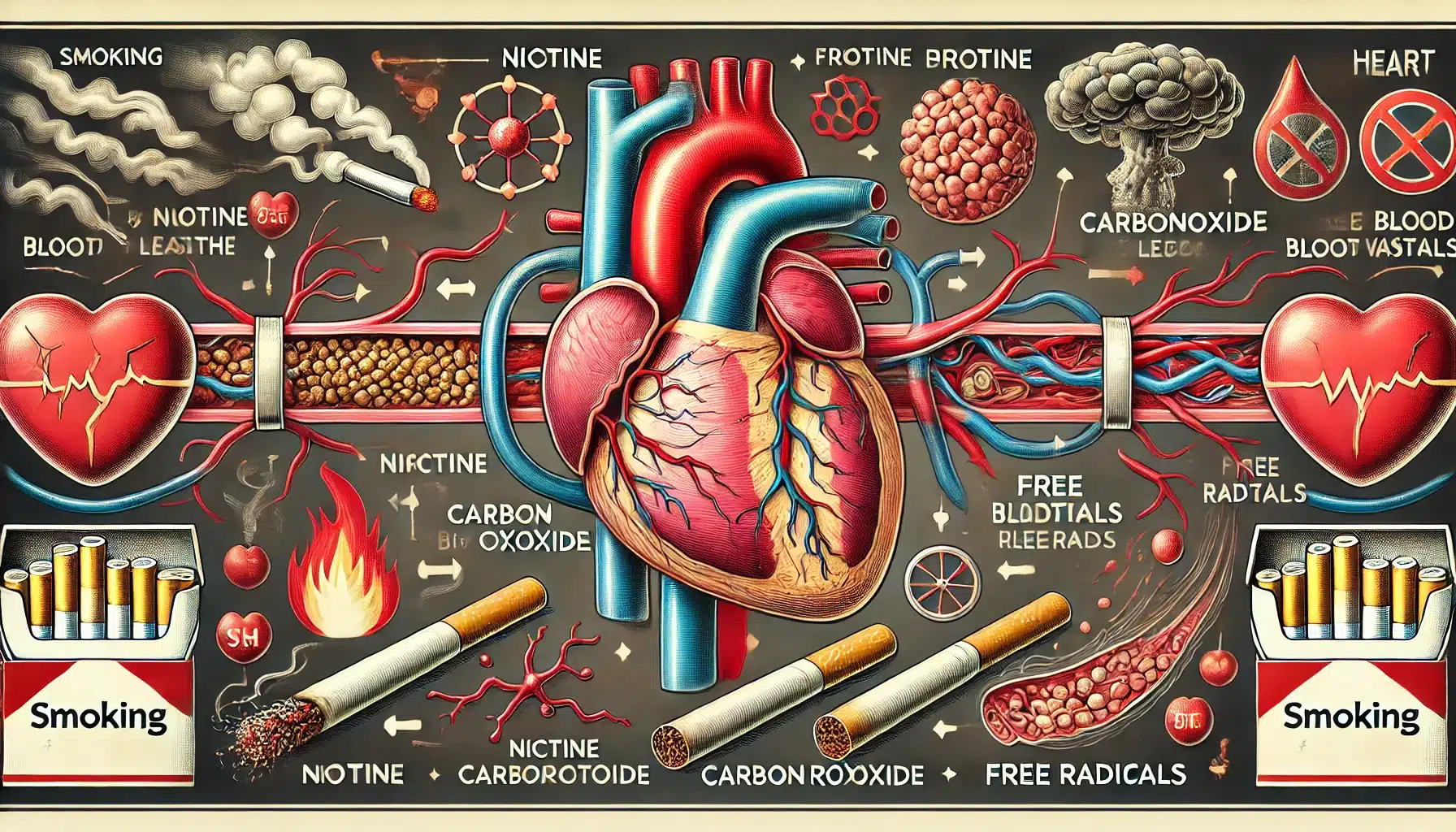What Is Cholesterol and Why Does It Matter?
Cholesterol is a waxy, fat-like substance found in every cell of your body. While it is often viewed negatively, cholesterol is actually essential for various bodily functions, including the production of hormones, vitamin D, and substances that help digest foods. However, having too much cholesterol in your blood can lead to health problems, particularly heart disease.
Cholesterol travels through your bloodstream in small packages called lipoproteins, which are made of fat (lipid) on the inside and proteins on the outside. These lipoproteins transport cholesterol where it is needed, but their balance and types significantly impact your health. When cholesterol levels are too high, they can build up in the walls of your arteries, narrowing them and making it harder for blood to flow through. Over time, this can lead to serious cardiovascular conditions, such as heart attack or stroke.
- Low-Density Lipoprotein (LDL): Often referred to as “bad” cholesterol, LDL can lead to the buildup of plaque in your arteries, increasing the risk of heart disease.
- High-Density Lipoprotein (HDL): Known as “good” cholesterol, HDL helps remove LDL from your bloodstream, transporting it to the liver, where it can be processed and eliminated.
- Triglycerides: These are another type of fat in your blood, and high levels of triglycerides can also contribute to the hardening or thickening of artery walls, increasing the risk of heart disease.
Maintaining a healthy balance of these cholesterol types is crucial for reducing your risk of cardiovascular diseases and maintaining overall heart health. Understanding how lifestyle factors, such as diet, exercise, and smoking, affect your cholesterol levels is key to managing your heart health effectively.
Understanding the Types of Cholesterol
Cholesterol is categorized primarily into two main types: Low-Density Lipoprotein (LDL) and High-Density Lipoprotein (HDL). These types are crucial in determining your overall heart health because they each play different roles in the body.
Low-Density Lipoprotein (LDL)
LDL is commonly known as “bad” cholesterol because it contributes to the formation of plaque, a thick, hard deposit that can clog arteries and make them less flexible—a condition known as atherosclerosis. When a clot forms in one of these narrowed arteries, it can result in a heart attack or stroke. High levels of LDL cholesterol increase the risk of cardiovascular diseases significantly, making it an important focus for health interventions.
High-Density Lipoprotein (HDL)
HDL is often referred to as “good” cholesterol because it helps remove LDL cholesterol from the arteries. HDL acts as a scavenger, carrying LDL away from the arteries and back to the liver, where it is broken down and eliminated from the body. Higher levels of HDL cholesterol are associated with a lower risk of heart disease because it reduces the buildup of cholesterol in the arteries, thus promoting a healthier cardiovascular system.
Triglycerides
In addition to LDL and HDL, triglycerides are another type of fat found in the blood. When you eat, your body converts any calories it doesn’t need to use right away into triglycerides, which are stored in fat cells. Later, hormones release triglycerides for energy between meals. However, a high level of triglycerides can contribute to the hardening or thickening of artery walls (arteriosclerosis), which increases the risk of heart disease, stroke, and other complications.
Maintaining a balanced level of LDL, HDL, and triglycerides is essential for good heart health. Factors such as diet, exercise, and smoking play significant roles in influencing these cholesterol levels, which is why understanding their impact can guide you toward better health choices.
How Smoking Impacts Your Cholesterol Levels

Smoking is widely known for its detrimental effects on lung health, but its impact on cholesterol levels and overall cardiovascular health is equally concerning. The chemicals in cigarette smoke, including nicotine, carbon monoxide, and free radicals, have a direct influence on your cholesterol levels, increasing the risk of heart disease.
The Role of Nicotine in Cholesterol Imbalance
Nicotine, the addictive substance found in cigarettes, triggers the release of adrenaline, which in turn raises your heart rate and blood pressure. This process also causes the body to produce more LDL cholesterol while lowering levels of HDL cholesterol. The imbalance created by high LDL and low HDL levels makes it easier for cholesterol to build up in the arteries, leading to a higher risk of atherosclerosis and other cardiovascular conditions.
The Effect of Carbon Monoxide on Arteries
Carbon monoxide is another harmful component of cigarette smoke that directly affects the cardiovascular system. When inhaled, carbon monoxide binds to hemoglobin in the blood more effectively than oxygen, reducing the amount of oxygen that reaches your heart and other tissues. This lack of oxygen can damage the inner lining of your arteries, making them more susceptible to cholesterol buildup and the formation of plaque. Over time, this damage can lead to coronary artery disease and other heart-related issues.
Free Radicals and Oxidative Stress: A Deeper Dive
Free radicals are unstable molecules that can damage cells, and they are abundantly present in cigarette smoke. Smoking introduces a significant amount of these free radicals into the body, leading to oxidative stress—a state where the balance between free radicals and antioxidants is disrupted. Oxidative stress damages lipids, proteins, and DNA in cells, including those in the arterial walls. This damage accelerates the process of plaque formation and promotes inflammation, further increasing the risk of high cholesterol and heart disease.
Overall, smoking creates a hostile environment in your body that promotes high LDL levels, low HDL levels, and increased triglycerides—all of which are risk factors for cardiovascular disease. Understanding these mechanisms highlights the importance of quitting smoking to protect your heart health.
The Long-Term Risks: Heart Disease and Beyond
The impact of smoking on cholesterol levels is a significant contributor to the long-term risks of heart disease, but the damage extends beyond just cardiovascular health. The harmful effects of smoking can lead to a range of chronic conditions that affect multiple systems in the body.
When cholesterol levels are unbalanced due to smoking, the most immediate risk is the development of atherosclerosis—a condition characterized by the buildup of plaques in the arteries. These plaques narrow and harden the arteries, reducing blood flow and increasing the risk of blood clots. A clot that blocks blood flow to the heart can cause a heart attack, while one that travels to the brain can result in a stroke. Smokers are significantly more likely to suffer from these life-threatening events compared to non-smokers.
Beyond heart attacks and strokes, smoking-related cholesterol imbalance can also contribute to peripheral artery disease (PAD). PAD occurs when plaque builds up in the arteries that supply blood to the limbs, particularly the legs. This can cause pain, numbness, and in severe cases, lead to infection and limb amputation. The connection between smoking and high cholesterol further exacerbates the risk of PAD, making it a critical concern for smokers.
Additionally, smoking can lead to chronic inflammation throughout the body. This inflammation not only affects the arteries but also contributes to the development of other diseases such as chronic obstructive pulmonary disease (COPD), various cancers, and diabetes. The persistent inflammatory state caused by smoking weakens the body’s ability to manage cholesterol levels effectively, creating a vicious cycle of health decline.
Overall, the long-term risks of smoking extend far beyond cholesterol and heart health. The systemic effects of smoking make it a major contributor to a wide array of chronic illnesses, underscoring the importance of quitting smoking to prevent these serious health outcomes.
The Long-Term Risks: Heart Disease and Beyond
The impact of smoking on cholesterol levels is a significant contributor to the long-term risks of heart disease, but the damage extends beyond just cardiovascular health. The harmful effects of smoking can lead to a range of chronic conditions that affect multiple systems in the body.
When cholesterol levels are unbalanced due to smoking, the most immediate risk is the development of atherosclerosis—a condition characterized by the buildup of plaques in the arteries. These plaques narrow and harden the arteries, reducing blood flow and increasing the risk of blood clots. A clot that blocks blood flow to the heart can cause a heart attack, while one that travels to the brain can result in a stroke. Smokers are significantly more likely to suffer from these life-threatening events compared to non-smokers.
Beyond heart attacks and strokes, smoking-related cholesterol imbalance can also contribute to peripheral artery disease (PAD). PAD occurs when plaque builds up in the arteries that supply blood to the limbs, particularly the legs. This can cause pain, numbness, and in severe cases, lead to infection and limb amputation. The connection between smoking and high cholesterol further exacerbates the risk of PAD, making it a critical concern for smokers.
Additionally, smoking can lead to chronic inflammation throughout the body. This inflammation not only affects the arteries but also contributes to the development of other diseases such as chronic obstructive pulmonary disease (COPD), various cancers, and diabetes. The persistent inflammatory state caused by smoking weakens the body’s ability to manage cholesterol levels effectively, creating a vicious cycle of health decline.
Overall, the long-term risks of smoking extend far beyond cholesterol and heart health. The systemic effects of smoking make it a major contributor to a wide array of chronic illnesses, underscoring the importance of quitting smoking to prevent these serious health outcomes.

Tips to Manage Cholesterol Levels if You Smoke
While quitting smoking is the most effective way to improve your cholesterol levels, making additional lifestyle changes can also help manage your cholesterol, especially if you are not yet ready to quit. Here are some strategies to consider:
- Adopt a Heart-Healthy Diet: Eating a diet rich in fruits, vegetables, whole grains, and lean proteins can help manage cholesterol levels. Focus on reducing saturated fats and eliminating trans fats, which can raise LDL cholesterol. Incorporating foods high in omega-3 fatty acids, such as salmon, walnuts, and flaxseeds, can help boost HDL cholesterol and lower triglycerides.
- Exercise Regularly: Regular physical activity can help raise HDL cholesterol while lowering LDL cholesterol and triglycerides. Aim for at least 150 minutes of moderate-intensity exercise, such as brisk walking or cycling, each week. Exercise also helps to improve overall cardiovascular health and can aid in managing stress, which may reduce the urge to smoke.
- Limit Alcohol Consumption: Drinking alcohol in moderation can help increase HDL cholesterol, but excessive drinking can raise triglycerides and contribute to weight gain, which can negatively affect cholesterol levels. For those who drink, moderation is key—up to one drink per day for women and up to two drinks per day for men.
- Maintain a Healthy Weight: Being overweight or obese can negatively impact cholesterol levels. Losing even a small amount of weight can help improve LDL, HDL, and triglyceride levels. A combination of a healthy diet and regular exercise is the most effective way to achieve and maintain a healthy weight.
- Manage Stress: Chronic stress can contribute to unhealthy behaviors such as smoking and poor eating habits, which can affect cholesterol levels. Incorporating stress management techniques such as yoga, meditation, or deep-breathing exercises can help reduce stress and promote overall well-being.
- Consider Medication: If lifestyle changes alone are not enough to manage your cholesterol levels, talk to your healthcare provider about medication options. Statins and other cholesterol-lowering medications can be effective in reducing LDL levels and managing overall cardiovascular risk.
Even if you continue to smoke, these lifestyle changes can help mitigate some of the damage and improve your cholesterol profile. However, the best strategy remains to quit smoking entirely, as this will provide the most significant health benefits.
Frequently Asked Questions (FAQs)
Does smoking always lead to high cholesterol levels?
While not everyone who smokes will have high cholesterol, smoking significantly increases the risk of developing imbalanced cholesterol levels. Smoking lowers HDL (good) cholesterol and raises LDL (bad) cholesterol, creating an unhealthy cholesterol profile that increases the risk of heart disease and other cardiovascular issues.
How quickly can quitting smoking improve my cholesterol levels?
Improvements in cholesterol levels can start within weeks of quitting smoking. HDL cholesterol levels begin to rise, and the risk of further cholesterol-related artery damage decreases. Within a year of quitting, your heart disease risk drops significantly, and your cholesterol levels continue to improve over time.
Can secondhand smoke also affect cholesterol levels?
Yes, exposure to secondhand smoke can negatively impact cholesterol levels. Similar to direct smoking, secondhand smoke can lower HDL cholesterol and raise LDL cholesterol, contributing to the development of heart disease. Avoiding secondhand smoke is important for maintaining healthy cholesterol levels and overall cardiovascular health.
Are there specific foods that can help improve cholesterol levels for smokers?
Yes, a heart-healthy diet can significantly improve cholesterol levels. Foods rich in soluble fiber, such as oats, beans, and fruits, can help lower LDL cholesterol. Incorporating healthy fats, like those found in olive oil, nuts, and fatty fish, can also boost HDL cholesterol. Reducing intake of saturated and trans fats is crucial for improving your cholesterol profile.
Is it too late to improve my cholesterol levels if I have been smoking for many years?
It is never too late to improve your cholesterol levels and overall heart health, even if you have been smoking for many years. Quitting smoking at any age can lead to significant health benefits. Your body begins to heal immediately, and your risk of heart disease decreases over time, regardless of how long you have smoked.



